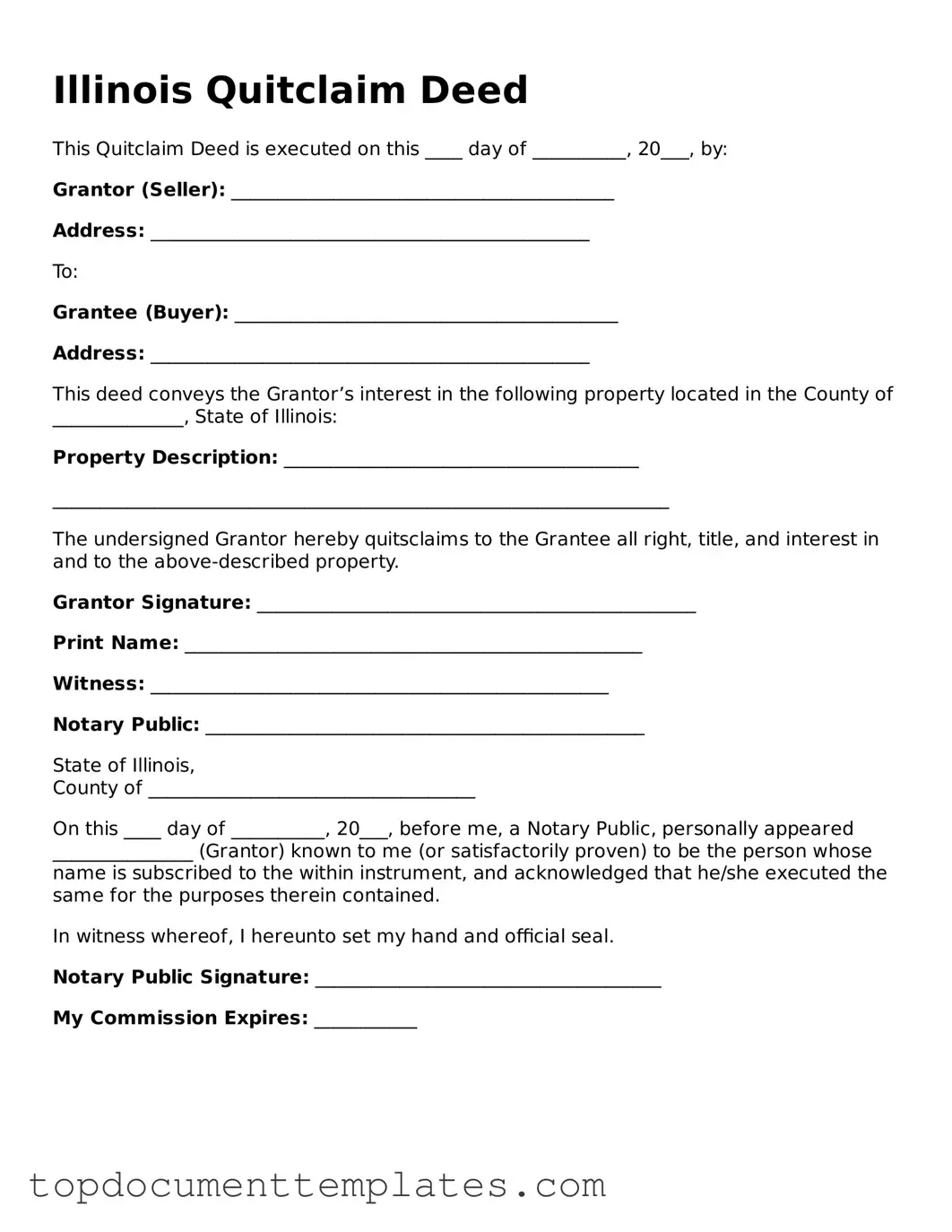The Illinois Quitclaim Deed form serves as a critical instrument in the transfer of property rights between parties, often utilized in situations where the grantor may not guarantee a clear title. This form allows an individual, known as the grantor, to convey their interest in a property to another party, referred to as the grantee, without making any warranties about the title's validity. While it is a straightforward document, the Quitclaim Deed can play a significant role in various transactions, including family transfers, divorces, and estate settlements. Importantly, it must be executed with the appropriate signatures and notarization to ensure its legality and effectiveness. Additionally, the form requires specific details such as the legal description of the property, the names of both parties, and the date of the transfer. Understanding the nuances of this form is essential for anyone involved in real estate transactions in Illinois, as it directly impacts property rights and ownership. Properly completing and recording the Quitclaim Deed can prevent future disputes and clarify ownership interests, making it a valuable tool in the realm of property law.
